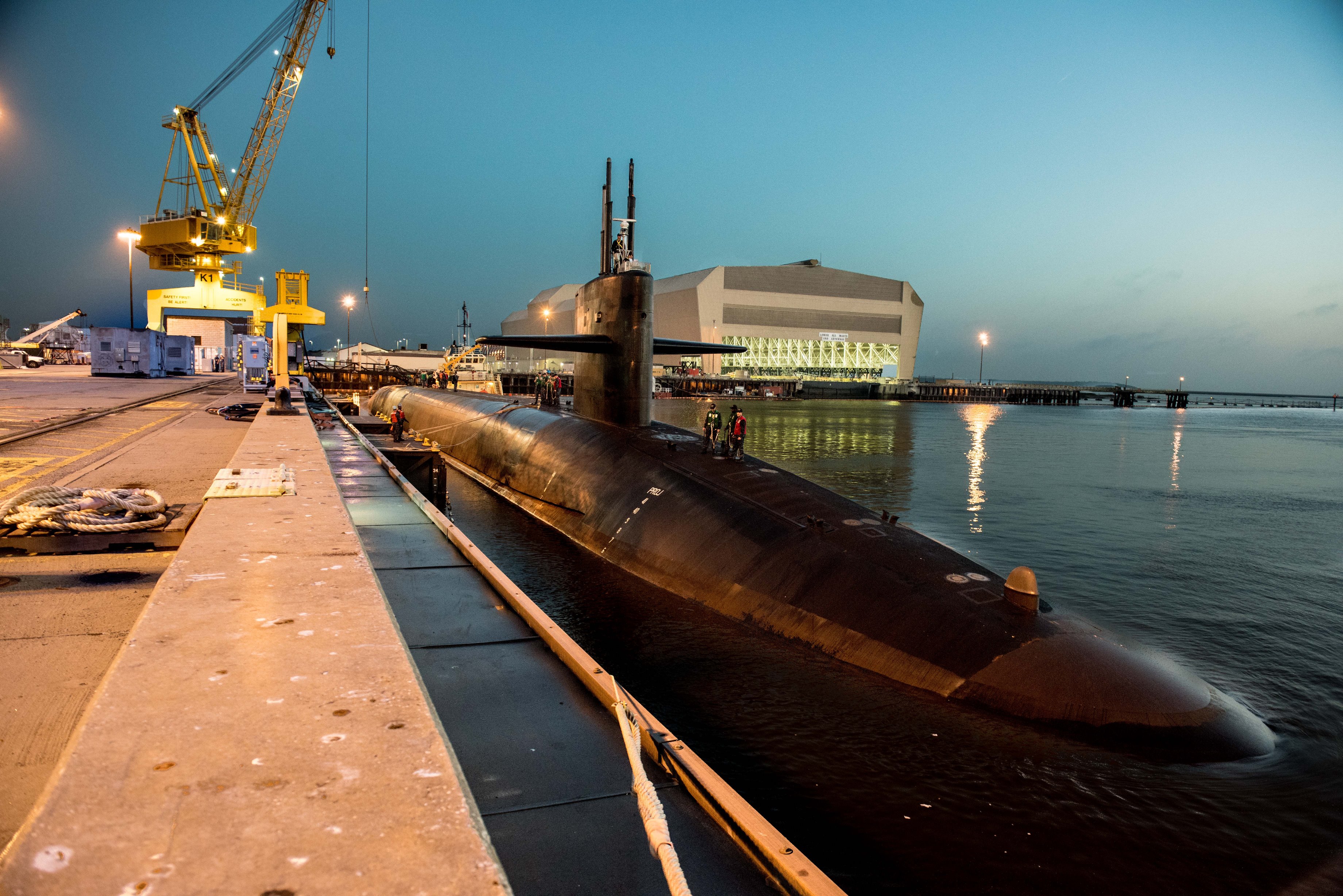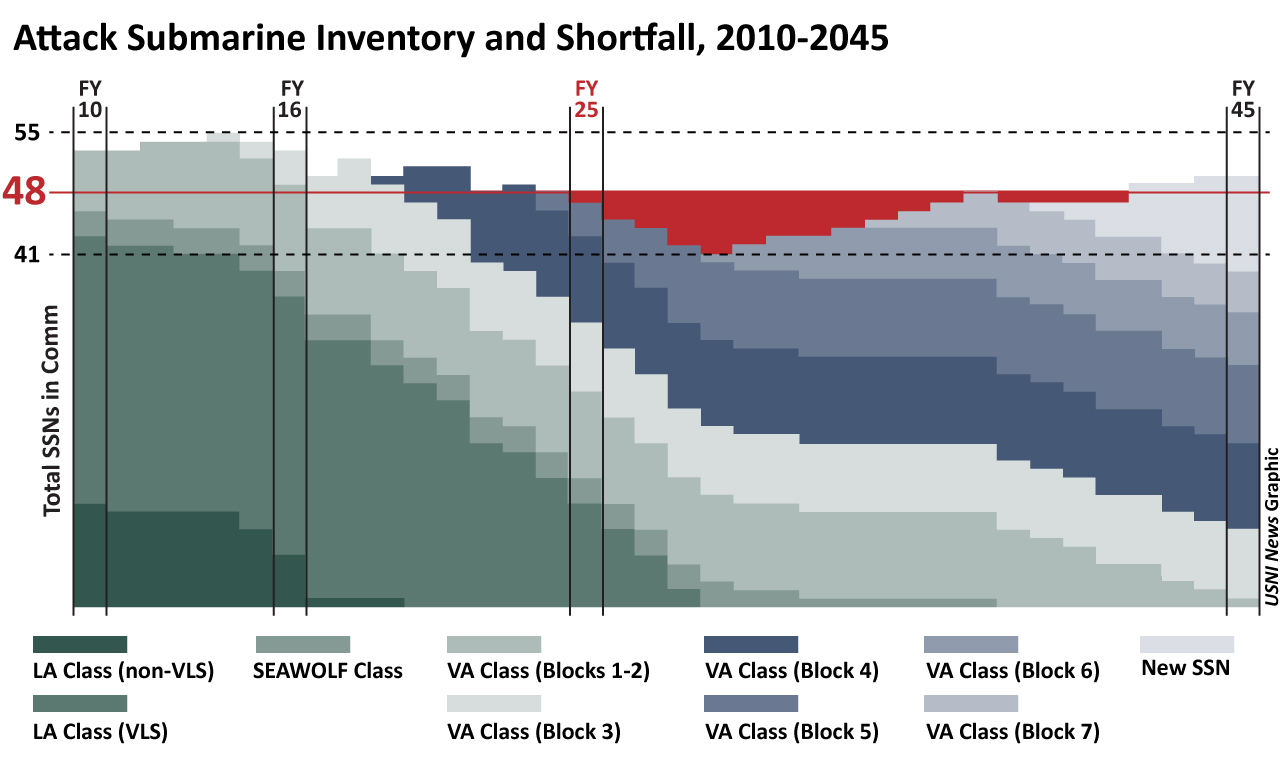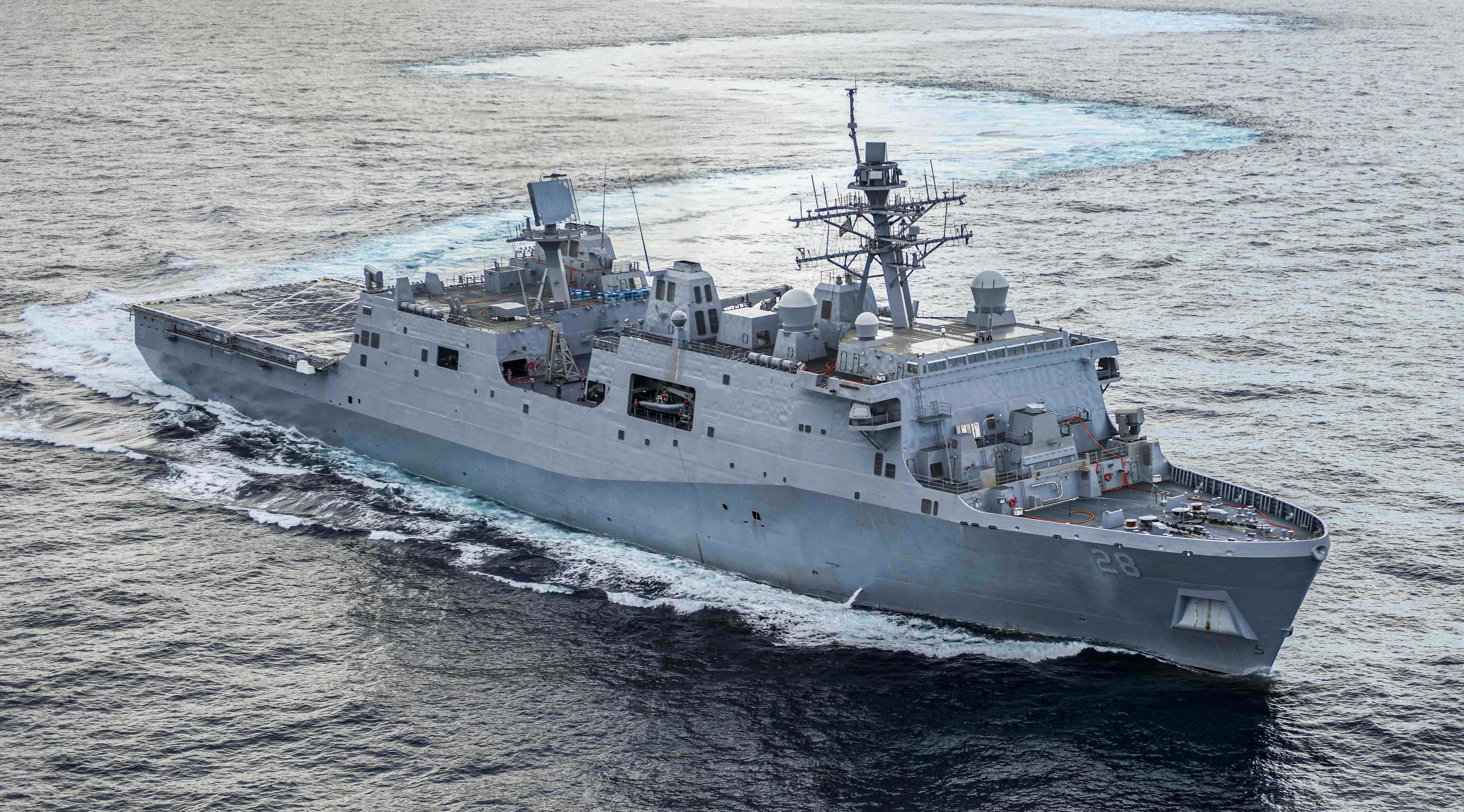
If the Navy is going to maintain its rate of building two Virginia-class attack submarines a year even while building the Ohio Replacement Program ballistic missile submarine, the service must make that decision sooner rather than later.
The first ORP boat will be procured in Fiscal Year 2021, creating a huge spike in the Navy’s shipbuilding budget and in the workload at sub builders General Dynamics Electric Boat and Newport News Shipbuilding. For both reasons, the Navy previously announced it would build only one Virginia boat in 2021 and in each subsequent year it bought a boomer. During the last few months, however, the combatant commanders’ needs for more attack subs and worries about an SSN shortfall next decade have grown more dire – leading the Navy to relook at whether it can build two SSNs and an SSBN in the same year.
“That’s a fiscal issue and it’s a capacity issue,” Navy acquisition chief Sean Stackley told lawmakers at a Senate Armed Services seapower subcommittee hearing April 6. The Navy is addressing the industry capacity issue now but needs Congress’s help in addressing how to pay for so many submarines at once.
With 2021 now in the five-year Future Years Defense Program, though, Stackley said a decision needs to be made in the next couple months.
“We will spend this budget cycle coming to grips with what it will take to keep Virginia [building at] two per year. And we are making that, as I described earlier, we are making that a priority in our budget build,” he said of the Program Objective Memorandum 2018 budget formulation process, which is ongoing and will be completed by this fall.
“We’ve got to nail down what it’s going to cost to add a second Virginia in 2021 in POM 18. We’ve got to come to grips with that funding requirement, because it’s going to come out of somewhere else” in the Navy budget, he said at the hearing.

If the Navy finds success in funding two SSNs and an SSBN in 2021 – which equates to four attack subs’ worth of work for the shipbuilders, or double the current workload – it may pave the way for continuing that pace in 2024, the next year the Navy will buy an ORP boat and currently plans to drop to just one Virginia.
In all these discussions, though, the imperative is that any changes to the Navy’s plans not hurt the ORP schedule. The first boat of the class must deliver and complete testing in time for a 2031 maiden deployment, which Stackley said “is chiseled in stone.” The Navy already experienced some delays early in the program and has eaten up all margin built into the schedule – and Stackley commented that “frankly what we need to be doing now is we need to be moving to the left, building margin back in that schedule because it’s as tight as it is.”
With the importance of ORP in mind, Stackley said increasing the Navy’s shipbuilding plans to include two Virginias in 2021 will require careful workforce monitoring. The two shipyards have enough physical space to accommodate the activity, and a recent Submarine Unified Build Strategy outlines how the Navy will balance work across both yards to maximize that available space. But both yards already have to hire a significant amount of skilled labor for ORP and would have to further increase that to support two Virginias a year.
“The challenge on the shipbuilder side – that’s the Navy and that’s industry – is to ensure that that ramp, because it’s a tough ramp, that we climb that ramp smartly,” he said.
“We have to manage the growth that’s going to be required, because we’re going to double the amount of submarine work; that’s significant growth and we’re going to have to manage that. But when we talk about maintaining two Virginias a year, once we get up on that plateau, were there, then we have to sustain it.”





